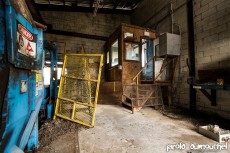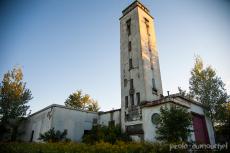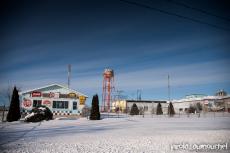Heavily damaged by the time, the old copper mine is closed for several years. While its lower floors are completely flooded with muddy and stagnant water, the ground floor was, meanwhile, weakened by a sedimentary rock ceiling that collapsed in...
The abandoned cement factory of Los Santos
The Badajoz plan
When I was a kid, I often traveled with my parents and my brothers in Los Santos, the village where I was born. Each time when we approached, my father used to say: "Beware, I will give a penny to the first one who will see the smoke of the plant." That was until 1973 before the closure of the factory, ie, seventeen years after its inauguration.
The sole purpose of its creation in 1956 was to provide cement to all work to improve the region's infrastructure such as dams, roads, construction of dozens of new villages. This project was called the Badajoz plan.
This factory employed over four hundred workers and has produced over two hundred thousand tons of cement per year. Nevertheless, the factory has been closed in 1973. It is now abandoned, since 40 years.
Related content
The advantage of a 4 hours ride to visit an abandoned sawmill is that we increase our chances of finding an intact place without the slightest trace of vandalism. Or at least, very little.
All along the road, the fear of finding a...
The abandoned Val Rose plant is unquestionably one of the most famous spots in Quebec City area. And honestly, I was rather reluctant to go there. Not that I thought the spot wasn't interesting, but in general, a place known as the Val Rose is,...
The place is big, very big. While the building is nearly 200,000 square feet, the site, meanwhile, is over than 430,000 square feet in an agricultural area of Saint-Jean-sur-Richelieu. For those interested, the site is for sale and the current...



















